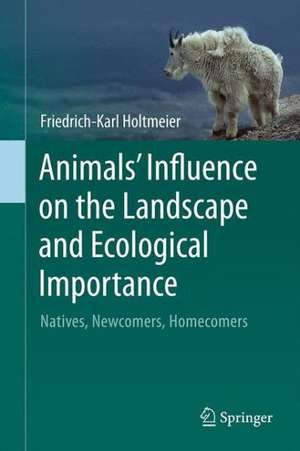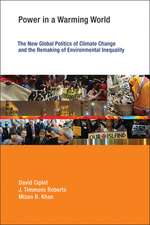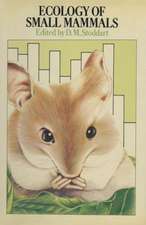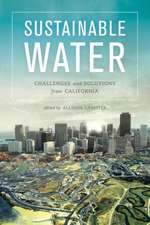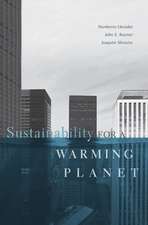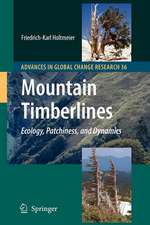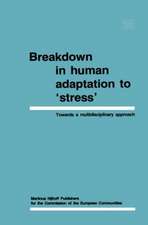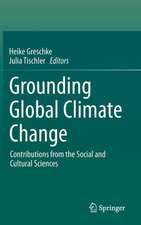Animals' Influence on the Landscape and Ecological Importance: Natives, Newcomers, Homecomers
Autor Friedrich-Karl Holtmeieren Limba Engleză Hardback – 5 noi 2014
| Toate formatele și edițiile | Preț | Express |
|---|---|---|
| Paperback (1) | 582.69 lei 38-44 zile | |
| SPRINGER NETHERLANDS – 27 sep 2016 | 582.69 lei 38-44 zile | |
| Hardback (1) | 659.53 lei 6-8 săpt. | |
| SPRINGER NETHERLANDS – 5 noi 2014 | 659.53 lei 6-8 săpt. |
Preț: 659.53 lei
Preț vechi: 775.91 lei
-15% Nou
Puncte Express: 989
Preț estimativ în valută:
126.20€ • 131.76$ • 104.45£
126.20€ • 131.76$ • 104.45£
Carte tipărită la comandă
Livrare economică 05-19 aprilie
Preluare comenzi: 021 569.72.76
Specificații
ISBN-13: 9789401792936
ISBN-10: 9401792933
Pagini: 400
Ilustrații: XXXI, 522 p. 171 illus., 65 illus. in color.
Dimensiuni: 155 x 235 x 27 mm
Greutate: 0.95 kg
Ediția:2015
Editura: SPRINGER NETHERLANDS
Colecția Springer
Locul publicării:Dordrecht, Netherlands
ISBN-10: 9401792933
Pagini: 400
Ilustrații: XXXI, 522 p. 171 illus., 65 illus. in color.
Dimensiuni: 155 x 235 x 27 mm
Greutate: 0.95 kg
Ediția:2015
Editura: SPRINGER NETHERLANDS
Colecția Springer
Locul publicării:Dordrecht, Netherlands
Public țintă
ResearchCuprins
1 Introduction.- 2 Animals’ Functional Role in the Landscape.- 3. Selected Landscapes under the Influence of Wild Herbivorous Mammals.- 4 Keystone Species.- 5 Introductions and Re-Introductions of Animals.- 6 Animals in Landscape Management and Nature Conservation.- 7 Potential Effects of Climate Change on Animal-Habitat Interactions.- 8 Epilogue.- 9 References.- 10 Index.
Textul de pe ultima copertă
In its first English-language edition, this book introduces the many-faceted interactions of animal populations with their habitats. From soil fauna, ants and termites to small and large herbivores, burrowing mammals and birds, the author presents a comprehensive analysis of animals and ecosystems that is as broad and varied as all nature.
Chapter 2 addresses the functional role of animals in landscape ecosystems, emphasizing fluxes of energy and matter within and between ecosystems, and the effects of animals on qualitative and structural habitat change. Discussion includes chapters on the role of animal population density and the impacts of native herbivores on vegetation and habitats from the tropics to the polar regions. Cyclic mass outbreaks of species such as the larch bud moth in Switzerland, the mountain pine beetle and the African red-billed weaver bird are described and analyzed. Other chapters discuss Zoochory – the dispersal of seeds by ants, mammals and birds – and the influence of burrowing animals on soil development and geomorphology. Consideration extends to the impact of feral domestic animals.
Chapter 5 focuses on problems resulting from introduction of alien animals and from re-introduction of animal species to their original habitats, discusses the effects on ecosystems of burrowing, digging and trampling by animals. The author also addresses keystone species such as kangaroo rats, termites and beavers.
Chapter 6 addresses the role of animals in landscape management and nature conservation, with chapters on the impact of newcomer species such as animals introduced into Australia, New Zealand and Europe, and the consequences of reintroduction of species to original habitat. It also discusses the carrying capacity of natural habit, public attitudes toward conversation and more.
The final section ponders the effects of climate on interactions between animals and their habitats.
Chapter 2 addresses the functional role of animals in landscape ecosystems, emphasizing fluxes of energy and matter within and between ecosystems, and the effects of animals on qualitative and structural habitat change. Discussion includes chapters on the role of animal population density and the impacts of native herbivores on vegetation and habitats from the tropics to the polar regions. Cyclic mass outbreaks of species such as the larch bud moth in Switzerland, the mountain pine beetle and the African red-billed weaver bird are described and analyzed. Other chapters discuss Zoochory – the dispersal of seeds by ants, mammals and birds – and the influence of burrowing animals on soil development and geomorphology. Consideration extends to the impact of feral domestic animals.
Chapter 5 focuses on problems resulting from introduction of alien animals and from re-introduction of animal species to their original habitats, discusses the effects on ecosystems of burrowing, digging and trampling by animals. The author also addresses keystone species such as kangaroo rats, termites and beavers.
Chapter 6 addresses the role of animals in landscape management and nature conservation, with chapters on the impact of newcomer species such as animals introduced into Australia, New Zealand and Europe, and the consequences of reintroduction of species to original habitat. It also discusses the carrying capacity of natural habit, public attitudes toward conversation and more.
The final section ponders the effects of climate on interactions between animals and their habitats.
Caracteristici
Addresses the functional role of animals in landscape ecosystems and the practical implications for landscape management and nature conservation Assesses the role of animals with special regard to the specific local socio-cultural and economic conditions Includes a section on climate change effects on animal-habitat interactions Includes supplementary material: sn.pub/extras
